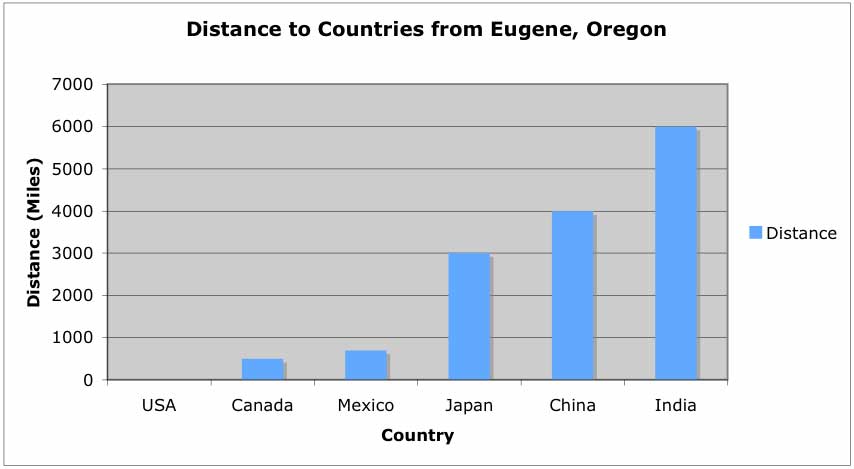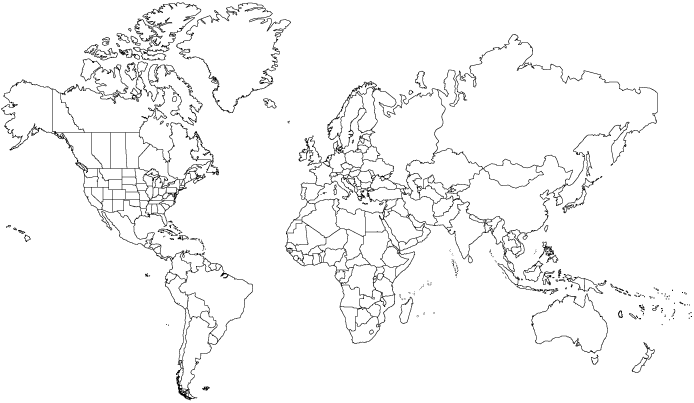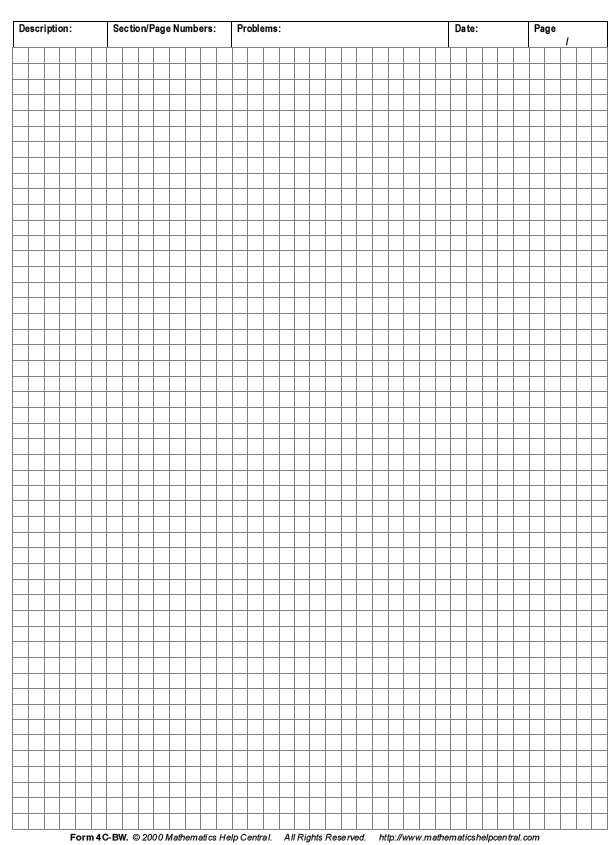|
TITLE |
Le mouvement: “Quels sont les liens entre différents endroits? |
|
UNIT/ACTIVITY NO. |
La Géographie / Activity 6 |
|
TOPIC |
Geographic movement of peoples, goods, and ideas |
|
FUNCTION |
Description, inference |
|
FOCUS |
Examining where products come from and discussing our shrinking global village. |
I. BACKGROUND INFORMATION FOR TEACHERS
Teacher Instructions
| Step 1. | Prepare the Handouts and Transparency for the activity. |
| Step 2. | Ask students to stand and circulate about the room, greeting each other. After 15 seconds, ask students to stop and turn to the person they find themselves next to. Ask students to have the following conversation:
|
| Step 3. | Repeat this process two-three more times until students could make some generalizations about where clothing comes from. Debrief together briefly after students sit down. Using Transparency 1 to put a dot within the borders of each country mentioned. As you do this, students should complete the chart on Handout 1, indicating the countries and items of clothing represented as classmates share. |
| Step 4. |
Ask students the following questions:
|
| Step 5. | Ask students to use an atlas to calculate the rough distance between your home town and the countries represented. They will use this information to complete the graph. |
| Step 6. | Distribute Handouts 2 and 3. Students will now create a graph to show how far their clothing had to travel in order to arrive in the United States. A different bar will represent clothing that comes from different countries. You may ask students to estimate distances to the nearest 100 or 500 miles. This might facilitate the creation of the graph. |
| Step 7. | After the graph is complete, have students use the blank map to draw arrows showing the movement of goods and services to the United States. |
| Step 8. | Debrief activity as a whole class by asking students what conclusions they can draw from the graph. Ask what some of the ramifications are of a shrinking world, economically, politically, and socially. Ask students what the lives of people their age living in these countries might be like. How might they be affected by a changing world? Also, have students discuss the types of products and ideologies the United States exports. (This includes agricultural as well as industrial goods. Ideologically, we attempt to export democracy and other American ideals.) |
| Step 9. | For homework, challenge students to find items at home that were not made abroad. Further, ask students to speculate on which items are made where and why. See how many items students can find that were made in the Northern hemisphere, instead of in Asia or Africa. |
Materials
Atalases and Internet
Notes
This lesson will introduce students to the idea of movement in geography. The movement of people, the import and export of goods, and mass communication have all played major roles in shaping the global village and economy.
Example of graph, without articles of clothing indicated:

II. STUDENT ACTIVITY HANDOUTS
Handout 1
NOM: _________________________________________________
| Le graphique. Utilisez votre atlas et donnez une estimation des distances entre votre ville aux États-Unis et les autres pays du monde ou se trouve la majorité des marchandises dans votre classe. |
|
Le pays |
Distance PAR RAPPORT à votre ville |
NOMBRE D’OBJETS DANS VOTRE CLASSE |
|
|
|
|
|
|
|
|
|
|
|
|
|
|
|
|
|
|
|
|
|
|
|
|
|
|
|
|
|
|
|
|
|
|
|
|
Sur le papier gradué:
- Sur l’axe x, notez les pays principaux où se trouvent les marchandises.
- Sur l’axe y, notez les augmentations par 500 kilomtres
- Coloriez les barres et notez le nombre d’objets qui viennent d’autres pays répresentés dans votre classe.
- Sur la carte, dessinez des flèches pour attester du mouvement des marchandises dans le monde.

